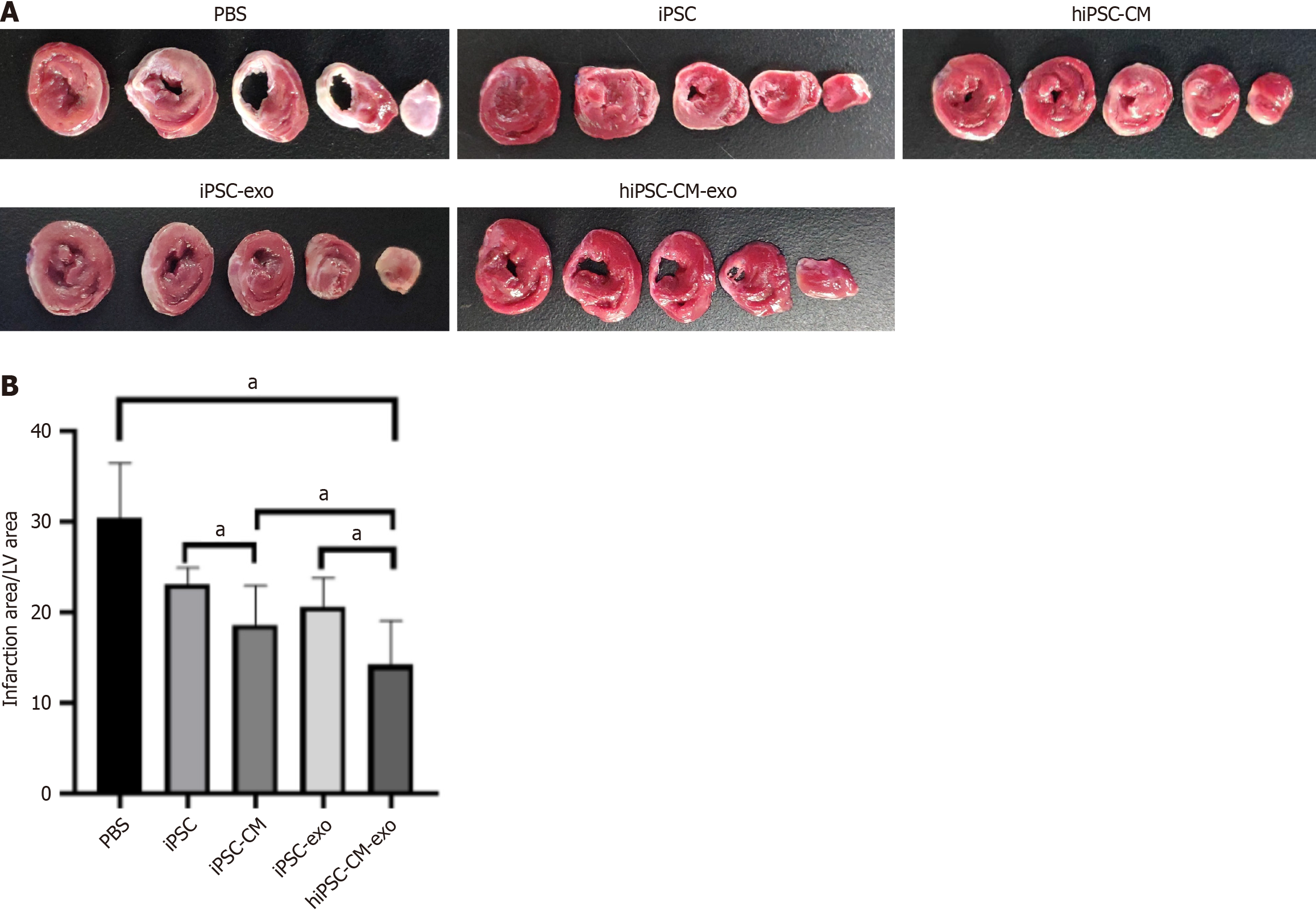Copyright
©The Author(s) 2025.
World J Stem Cells. Mar 26, 2025; 17(3): 101454
Published online Mar 26, 2025. doi: 10.4252/wjsc.v17.i3.101454
Published online Mar 26, 2025. doi: 10.4252/wjsc.v17.i3.101454
Figure 3 Human-induced pluripotent stem cell-derived cardiomyocyte exosomes reduce infarction area.
A: Representative images of 2,3,5-triphenyltetrazoliumchloride staining across five continuous slices of the left ventricle from various group hearts; B: The infarct size, which is expressed as a percentage of the total left ventricle area, is depicted. Data are shown as the mean ± SD from n = 3 biologically independent samples among different groups. aP < 0.05. hiPSC-CMs: Human-induced pluripotent stem cell-derived cardiomyocytes; hiPSC-CM-exos: Human-induced pluripotent stem cell-derived cardiomyocyte-derived exosomes; iPSCs: Induced pluripotent stem cells; iPSC-CMs: Induced pluripotent stem cell-derived cardiomyocytes; iPSC-exos: Induced pluripotent stem cell-derived exosomes; LV: Left ventricular; PBS: Phosphate-buffered saline.
- Citation: Jin JJ, Liu RH, Chen JY, Wang K, Han JY, Nie DS, Gong YQ, Lin B, Weng GX. MiR-21-5p-enriched exosomes from hiPSC-derived cardiomyocytes exhibit superior cardiac repair efficacy compared to hiPSC-derived exosomes in a murine MI model. World J Stem Cells 2025; 17(3): 101454
- URL: https://www.wjgnet.com/1948-0210/full/v17/i3/101454.htm
- DOI: https://dx.doi.org/10.4252/wjsc.v17.i3.101454









